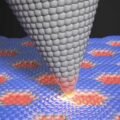Researchers from Singapore, Malaysia, Denmark, the UK, and Poland have all collaborated to quantumly entangle a tardigrade. Tardigrades, also known as “water bears,” are microscopic organisms with eight legs. Their ability to live in some of the most extreme places on earth (like deep-sea volcanoes) makes them perfect for studying tardigrades. They can go into a state called “cryptobiosis,” to survive more extreme conditions like oxygen deficiency.
Tardigrades have become part of popular culture due to their unique looks and cute personality, as described by their nickname “water bears.”
Background: Fragility of Quantum Entanglement
It was the cryptobiosis that triggered the interest of the researchers. The use of a tardigrade is important, as previous research has shown quantum entanglement to work on single particles only. This is because quantum entanglement, where the quantum states of two particles are not independent of each other, is quite fragile. It’s very easy to break quantum entanglement, which makes it very difficult to prove in an experiment. Looking at entangling a multicellular organism, like a tardigrade, would be unheard of, changing quantum mechanics forever. If entanglement could happen with multi-cellular organisms, this could have significant impacts on industries like quantum computing, and even our internet connections. Both of these use quantum entanglements, in some form, to help produce essential results upon which our society relies.
Analysis: Ice That Tardigrade!
To quantumly entangle the tardigrade, the team of researchers used superconducting qubits, which are basic units of quantum information typically used in a quantum computer. Qubits have to be kept at extremely low temperatures in order to work, so the tardigrade was going to have to be exposed to frigid conditions. The tardigrade was placed between two superconducting qubits inside a copper cavity, and an electric current was sent through to encourage entanglement.
Here the tardigrade was used as the dielectric capacitor in the electric circuit. The researchers tested the set-up without the tardigrade to see if the qubits could entangle with each other. This setup, while interesting, made it difficult to test for entanglement between the tardigrade and the system, or even just between the qubits themselves. Inducing entanglement can be quite tricky, because it is so fragile, and many physicists are currently studying ways to make entanglement easier to produce and measure. In the case of this experiment, while the researchers suggested they entangled a tardigrade, it would be difficult to validate.
Once the tardigrade seemed to be entangled to the system, the researchers would determine if the tardigrade was actually entangled by putting it in a more extreme environment than the organism could actually survive in. As the system could “survive” in any frigid condition, it would be expected that the tardigrade could too. The researchers believed that if the tardigrade could survive in temperatures below 10 milli-Kelvin (which is around -460°F or -273°C) and pressures below 6×10-6 mbar, then the tardigrade was actually entangled. This, however, seems a bit confusing, as the tardigrades are already prone to survive extreme conditions, which would give inconclusive results. With a lot at stake, the researchers held their breath, and submitted the organism to unbearable conditions, hoping that it would go into a state of cryptobiosis and survive.
Outlook: Shrodinger’s Tardigrade?
After running the experiment, the researchers found that the organism had survived and returned to its active form after being in this extreme environment for over 420 hours. The tardigrade’s ability to go into cryptobiosis no doubt helped in its survival. This experiment sets a new record for the conditions that a complex organism can survive in. Yet, there are still many questions to be asked from this experiment, as it’s inconclusive if the tardigrade was actually entangled or not. Further experiments need to be performed to make these results more determined. For now, the experiment proves that a Shrodinger’s tardigrade may possibly exist. From the paper, the researchers stated that it was: “possible to do a quantum and hence a chemical study of a system, without destroying its ability to function biologically.”
Kenna Castleberry is the Science Communicator at JILA and a staff writer at The Quantum Daily and The Deep Tech Insider. She has written various pieces on diversity in deep tech, covering stories from underrepresented communities, as well as discussing how science fiction contributes to the reputations of deep technologies. Follow her on Twitter @kennaculture
